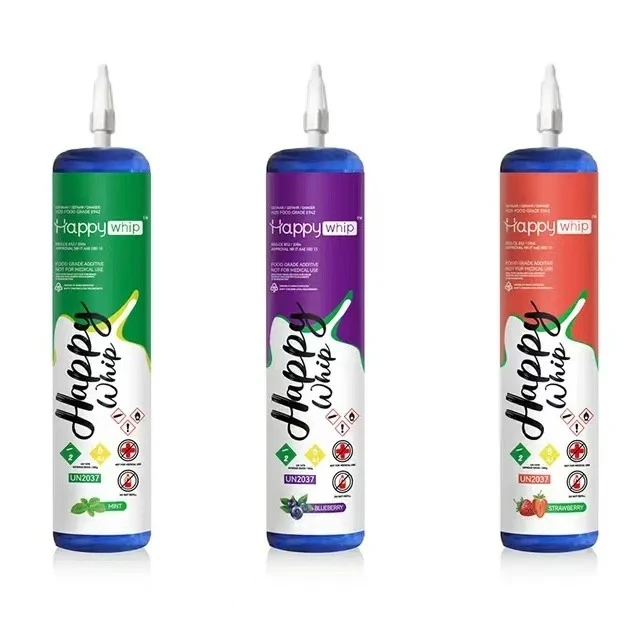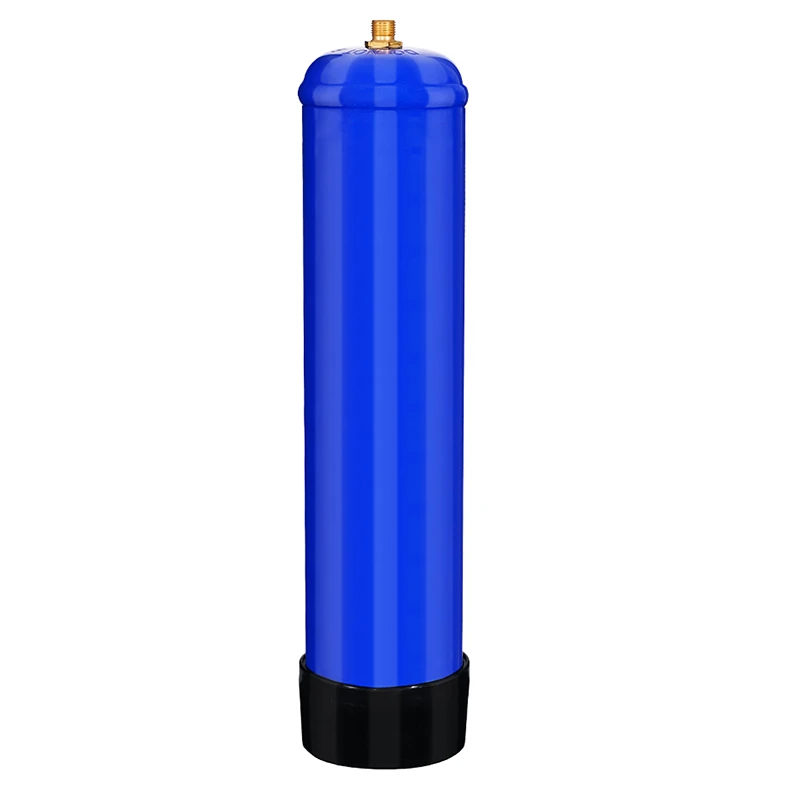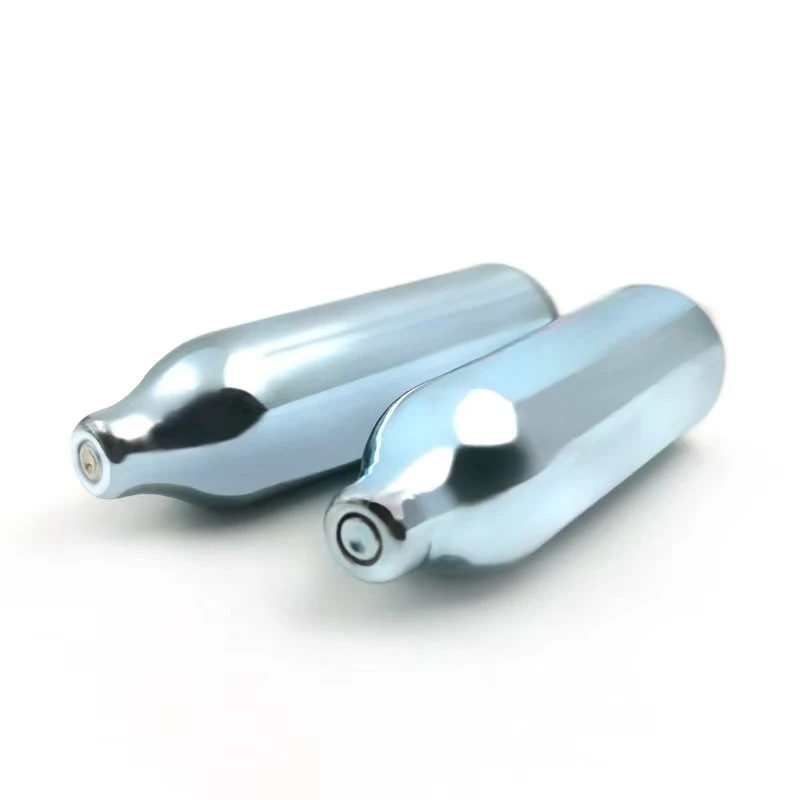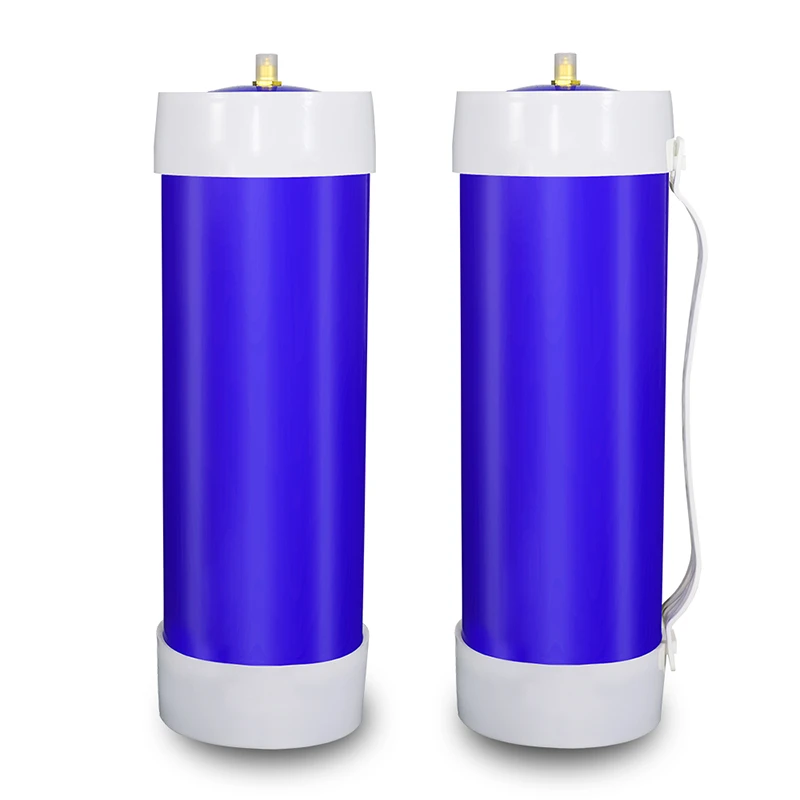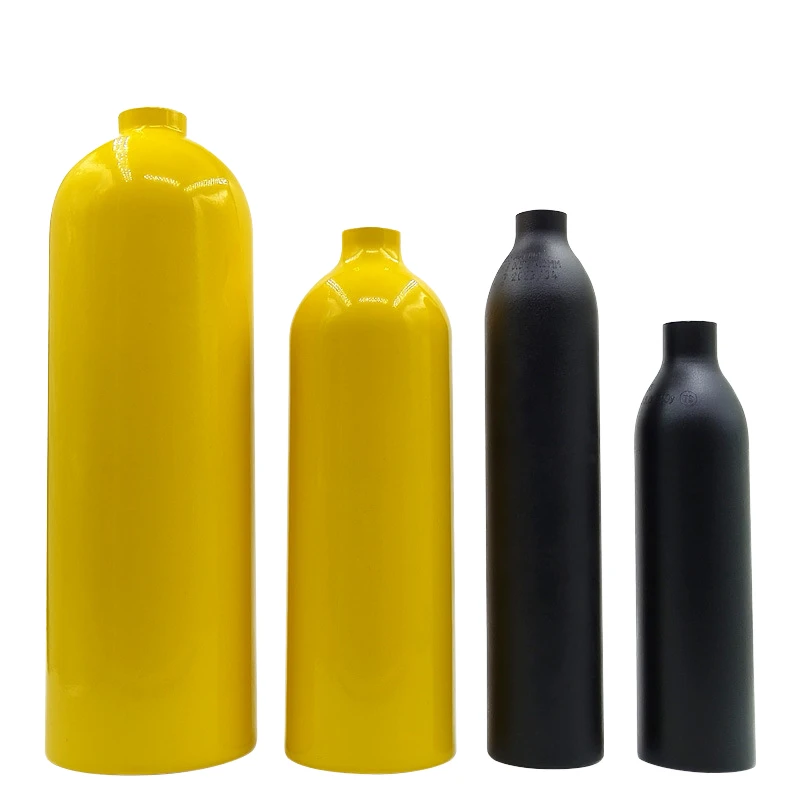
Scuba Tanks for Sale | Portable & Durable Dive Cylinders
The underwater world offers breathtaking beauty and incredible adventure, but it demands reliable equipment. At the heart of every successful dive is the scuba tank, a critical piece of life-support gear. For anyone looking for a scuba tank for sale, understanding the nuances of these vital cylinders is paramount. This guide delves deep into the specifics, from industry trends and technical parameters to manufacturing excellence and application scenarios, ensuring you make an informed decision when selecting your next diving oxygen cylinder. We focus on our flagship product, the Diving Oxygen Cylinder, available at https://www.whipway.com/oxygen-diving-cylinder.html.
Industry Trends in Scuba Tanks for Sale: Innovation and Sustainability
The market for scuba tanks for sale is dynamic, continually evolving to meet divers' demands for safety, performance, and portability. Recent trends highlight a significant shift towards lighter, more durable materials, enhanced safety features, and a growing emphasis on environmental sustainability. Composite cylinders, in particular, are gaining traction due to their reduced weight, offering unparalleled convenience for travelers and technical divers alike. Furthermore, advancements in valve technology, pressure monitoring systems, and corrosion resistance treatments are setting new benchmarks for reliability and longevity in both scuba diving tank and scuba air tank designs. The global market for diving equipment is projected to grow significantly, with a CAGR of around 6% from 2023 to 2030, driven by increasing participation in recreational diving and a rising demand for professional underwater activities.
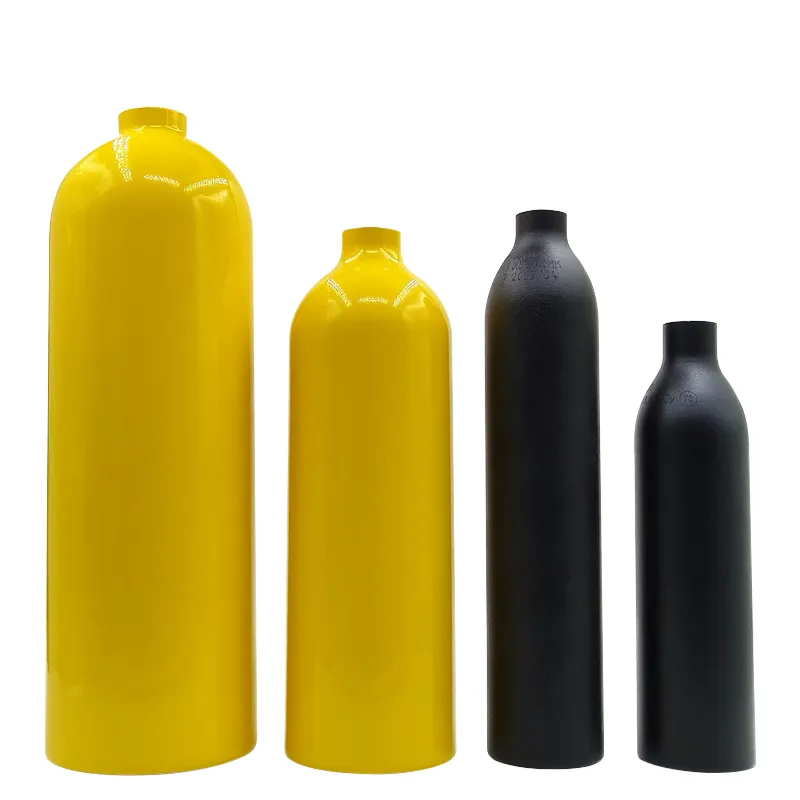
Innovations in lightweight and durable materials for modern scuba tanks for sale.
Another emerging trend is the integration of smart technology into diving gear, including tanks. While still in nascent stages, future personal scuba tank designs may incorporate sensors for real-time gas consumption tracking, remote monitoring, and enhanced safety alerts. This technological push is transforming how divers interact with their equipment, providing greater awareness and control. Sustainability is also a key driver; manufacturers are exploring eco-friendly materials and production processes to reduce the environmental footprint of scuba tanks for sale, aligning with the diving community's commitment to ocean conservation.
Technical Parameters and Deep Dive into our Diving Oxygen Cylinder
Understanding the technical specifications is crucial when evaluating any scuba tank for sale. Our Diving Oxygen Cylinder (Product URL: https://www.whipway.com/oxygen-diving-cylinder.html) is engineered to meet the highest standards of performance and safety. Key parameters include:
- Material Composition: High-strength aluminum alloys (e.g., 6061-T6) or robust steel. Aluminum tanks are lighter and have superior corrosion resistance in saltwater environments, while steel tanks are known for their higher pressure ratings and negative buoyancy, which can be advantageous for specific diving conditions. Our Diving Oxygen Cylinders primarily utilize premium-grade aluminum for optimal balance of weight, durability, and corrosion resistance.
- Working Pressure (WP): Typically expressed in PSI (Pounds per Square Inch) or Bar. Common pressures for scuba tanks for sale range from 2400 PSI (165 Bar) to 3500 PSI (240 Bar). Our Diving Oxygen Cylinder operates at a standard working pressure optimized for safety and gas capacity.
- Water Volume (Capacity): Measured in Liters (L) or Cubic Feet (cu ft). This indicates the total internal volume of the cylinder. Common capacities for scuba diving tank options range from 7L to 18L, or 50 cu ft to 120 cu ft. The capacity directly impacts your dive time.
- Buoyancy Characteristics: Tanks can be positively, neutrally, or negatively buoyant depending on their material, construction, and fill level. Aluminum tanks typically become positively buoyant as they empty, while steel tanks remain negatively buoyant throughout the dive. Our Diving Oxygen Cylinder is designed to offer predictable buoyancy for ease of trim and control underwater.
- Valve Type: K-valve (yoke) and DIN valve are the most common. DIN valves, common in Europe and technical diving, screw directly into the tank, providing a more secure seal and higher pressure rating capacity. K-valves are common in recreational diving. Our cylinders can be equipped with versatile valves compatible with both systems.
- Hydrostatic Test Date: A crucial safety inspection where the tank is pressurized to 1.66 times its working pressure to check for structural integrity. These tests are required periodically (e.g., every 5 years in the US, 2.5 years in some other regions) to ensure the tank remains safe. Our diving oxygen cylinder comes with up-to-date certifications.
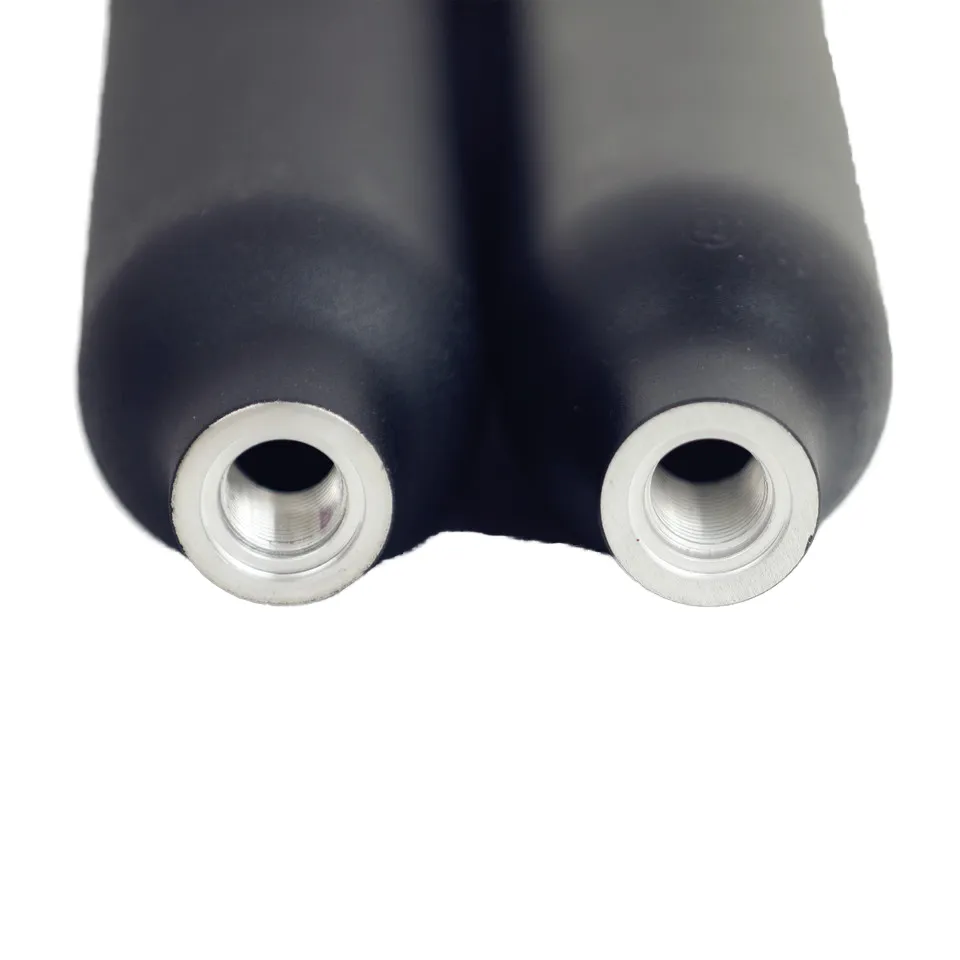
Precision engineering ensures the optimal performance and safety of our Diving Oxygen Cylinder.
Manufacturing Process of Scuba Tanks for Sale: Precision and Quality Assurance
The manufacturing of a high-quality scuba tank for sale is a complex process demanding meticulous attention to detail, advanced engineering, and stringent quality control. Our Diving Oxygen Cylinder follows a multi-stage process to ensure unparalleled safety and longevity.
Material Selection & Preparation
We begin with selecting premium-grade seamless aluminum alloy tubes (typically 6061-T6) known for their excellent strength-to-weight ratio and corrosion resistance. These tubes undergo rigorous inspection for any defects before processing. This initial phase sets the foundation for a durable and reliable portable scuba tank.
Hot Extrusion & Forming
The aluminum tubes are heated to precise temperatures and then subjected to a hot extrusion process. This forces the metal through a die, shaping it into the desired cylindrical form. Following extrusion, the bottom of the cylinder is formed through a hot spinning or cold pressing process, creating a seamless base. This critical step ensures the structural integrity of the scuba air tank.

Hot extrusion and forming processes ensure the seamless integrity of the cylinder body.
Heat Treatment & Aging
After forming, the cylinders undergo a specialized heat treatment process, often referred to as T6 tempering for 6061 aluminum. This involves solution heat treatment followed by artificial aging, significantly enhancing the material's strength, hardness, and fatigue resistance. This process is vital for the long-term performance and safety of the diving oxygen cylinder.
Neck Forming & Threading
The top of the cylinder is then precision-formed to create the neck, which will receive the valve. This involves careful heating and shaping. Following this, the neck is meticulously machined and threaded using advanced CNC (Computer Numerical Control) processing. The threads must adhere to extremely tight tolerances (e.g., CGA V-9 standards for North America) to ensure a perfect, leak-free seal with the valve.
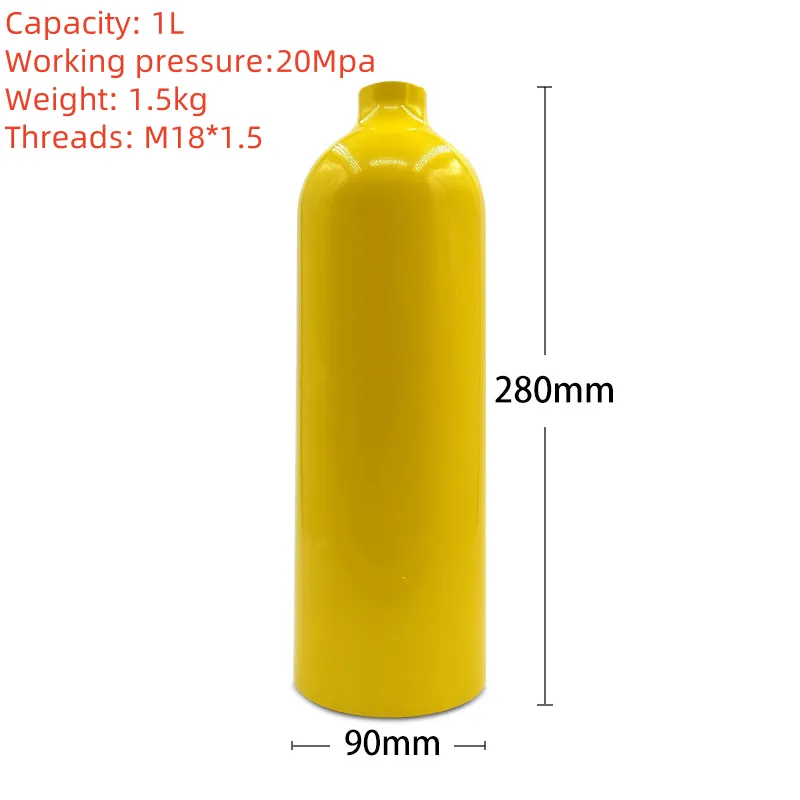
Precision CNC machining of the cylinder neck and threading for a secure valve fit.
Surface Treatment & Coating
To enhance corrosion resistance and aesthetic appeal, the cylinders undergo various surface treatments. This may include shot blasting for surface preparation, anodizing, and then applying a durable powder coating or protective paint. These coatings provide an extra layer of defense against harsh marine environments, extending the life of your scuba diving tank.
Rigorous Testing & Quality Control
Every single diving oxygen cylinder undergoes a battery of stringent tests to ensure it meets international safety standards.
- Hydrostatic Testing: Each cylinder is subjected to extreme internal pressure (e.g., 1.66 times working pressure for US DOT standards, 1.5 times for ISO standards) to verify its structural integrity and elasticity. This ensures the tank can safely handle repeated pressurization.
- Ultrasonic Testing (UT): Advanced ultrasonic inspection is used to detect any microscopic flaws or inclusions within the metal that are not visible to the naked eye.
- Burst Test: A destructive test performed on a sample batch of tanks to determine the ultimate pressure at which the tank will fail. This provides critical data for design safety margins.
- Visual Inspection: Thorough internal and external visual inspections for defects, cracks, or corrosion.
- Marking & Certification: Once all tests are passed, each cylinder is stamped with its unique serial number, manufacturing date, and certification marks (e.g., ISO 9001, ANSI, DOT, CE, PED). These markings attest to its compliance with national and international safety regulations, providing reassurance for every scuba tank for sale.

Every Diving Oxygen Cylinder undergoes rigorous hydrostatic testing and quality control.
Our commitment to these detailed manufacturing and testing protocols ensures that our Diving Oxygen Cylinder not only meets but often exceeds industry standards, offering an estimated service life of 20-30 years with proper care and regular inspections.
Application Scenarios and Industry Use
The versatility of scuba tanks for sale extends far beyond recreational diving. Our Diving Oxygen Cylinder is a cornerstone in various demanding industries due to its reliability, robust construction, and high-pressure gas storage capability.
- Recreational Diving: The primary application, enabling enthusiasts to explore coral reefs, wrecks, and marine life. Our portable scuba tank options are perfect for travel.
- Technical Diving: Used for decompression gases (Nitrox, Trimix) in deep or extended dives, requiring multiple cylinders for different gas mixes.
- Commercial Diving: Essential for underwater construction, inspection, repair, salvage operations, and offshore oil and gas industry maintenance. The durability and reliability of a good scuba air tank are paramount here.
- Public Safety Diving: Utilized by police, fire departments, and search and rescue teams for underwater recovery, evidence collection, and emergency response.
- Aquaculture: For maintaining oxygen levels in large fish farms or facilitating underwater maintenance of aquaculture infrastructure.
- Scientific Research: Supporting marine biologists, archaeologists, and geologists in underwater data collection, sample retrieval, and long-term observation.
- Medical and Emergency Services: While primarily for breathing air/enriched air, smaller variants can be adapted for emergency oxygen delivery in remote or challenging environments.
Application in Harsh Environments
Our Diving Oxygen Cylinder exhibits significant advantages in harsh environments. Its premium aluminum alloy construction provides superior corrosion resistance, crucial for saltwater immersion in marine salvage or petrochemical industry inspections (e.g., inspecting submerged pipelines). The precise manufacturing and robust design also ensure reliable performance in extreme temperatures, making it suitable for both tropical and cold-water diving operations, providing consistent gas delivery when it matters most.
Technical Advantages of Our Diving Oxygen Cylinder
When considering a scuba tank for sale, the advantages offered by the Diving Oxygen Cylinder from Whipway are clear:
- Superior Corrosion Resistance: Crafted from high-grade aluminum, our cylinders offer exceptional resistance to rust and saltwater corrosion, significantly extending their operational lifespan, especially compared to some steel alternatives. This is a critical factor for long-term ownership and reduced maintenance.
- Lightweight Design: Compared to traditional steel tanks of equivalent capacity, our aluminum portable scuba tank reduces overall gear weight, enhancing diver comfort, reducing back strain, and making transport and travel considerably easier.
- Consistent Performance: Engineered with precision, each cylinder ensures consistent gas delivery and reliable pressure retention, crucial for safe and predictable dive profiles.
- Compliance with Global Standards: Our manufacturing processes and finished products adhere strictly to international standards such as ISO (International Organization for Standardization) 7866, DOT (U.S. Department of Transportation) regulations, and PED (Pressure Equipment Directive) for CE marking, guaranteeing global acceptance and safety.
- Energy Efficiency in Production: Our modern manufacturing techniques, including optimized extrusion and heat treatment processes, are designed to minimize energy consumption, reflecting our commitment to sustainable practices.
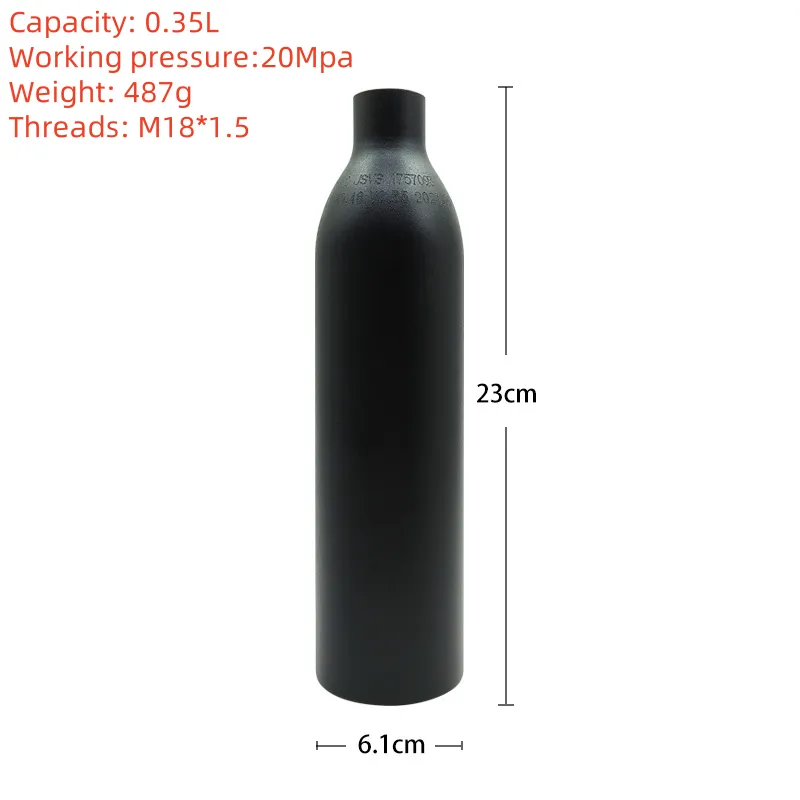
Our Diving Oxygen Cylinder offers superior corrosion resistance for extended life in marine environments.
Comparative Analysis: Popular Scuba Tanks for Sale
To help illustrate the variations and choices available when looking for a scuba tank for sale, here's a comparative table of typical specifications for various tank types found in the market, including our Diving Oxygen Cylinder. This comparison highlights common industry standards and the advantages of different materials and capacities.
| Parameter | Aluminum 80 cu ft (e.g., Diving Oxygen Cylinder) | Steel 72 cu ft (HP) | Aluminum 63 cu ft (Compact) | Composite 100 cu ft (Carbon Fiber) |
|---|---|---|---|---|
| Material | 6061-T6 Aluminum Alloy | Chrome Molybdenum Steel | 6061-T6 Aluminum Alloy | Carbon Fiber Wrapped Aluminum/Steel Liner |
| Water Volume (L) | 11.1 Liters | 9.9 Liters | 8.7 Liters | 13.8 Liters |
| Working Pressure (PSI/Bar) | 3000 PSI / 207 Bar | 3442 PSI / 237 Bar | 3000 PSI / 207 Bar | 4350 PSI / 300 Bar |
| Empty Weight (kg/lbs) | 14.3 kg / 31.5 lbs | 14.5 kg / 32 lbs | 11.8 kg / 26 lbs | 9.5 kg / 21 lbs |
| Buoyancy (full/empty) | -0.9 kg / +1.8 kg | -3.2 kg / -0.5 kg | -0.7 kg / +1.5 kg | -0.5 kg / +0.8 kg |
| Corrosion Resistance | Excellent | Good (requires maintenance) | Excellent | Excellent (outer shell) |
| Typical Lifespan (Years) | 20-30+ | 20-30+ | 20-30+ | 15 (common, due to composites) |
| Price Range ($USD) | $200 - $350 | $300 - $450 | $180 - $300 | $600 - $1000+ |
Choosing the Right Material
Our Diving Oxygen Cylinder, typically an Aluminum 80, strikes an excellent balance for most recreational divers. Its buoyancy characteristics are manageable, becoming slightly positive when empty, which many divers prefer. Steel tanks offer negative buoyancy for the entire dive, potentially reducing the need for trim weights. Composite tanks are the lightest but come at a premium price and often have a shorter mandated lifespan, making the aluminum scuba air tank a highly versatile and cost-effective choice.
Manufacturer Comparison: What to Look for in a Provider of Scuba Tanks for Sale
When selecting a supplier for your scuba tank for sale, the manufacturer's reputation, adherence to standards, and commitment to customer satisfaction are crucial. Whipway stands out through:
- Proven Track Record: With over 15 years of experience in high-pressure gas cylinder manufacturing, we have consistently delivered reliable products to diverse industries including diving, medical, and industrial gas applications. Our deep expertise in material science and pressure vessel engineering is unmatched.
- Global Certifications: Our facilities and products are consistently audited and certified by leading international bodies, including ISO 9001 for quality management systems, and individual product certifications like US DOT (Department of Transportation) and European CE/PED (Pressure Equipment Directive) marks. This ensures our diving oxygen cylinder meets stringent global safety and quality benchmarks.
- Research & Development: We invest heavily in R&D to continuously improve product design, material efficiency, and manufacturing processes, ensuring our scuba tanks for sale remain at the forefront of technology.
- Customer-Centric Approach: Our focus extends beyond manufacturing to comprehensive customer support, understanding individual needs, and providing tailored solutions. Our team comprises experts who understand the nuances of diving and high-pressure gas applications, offering invaluable advice.
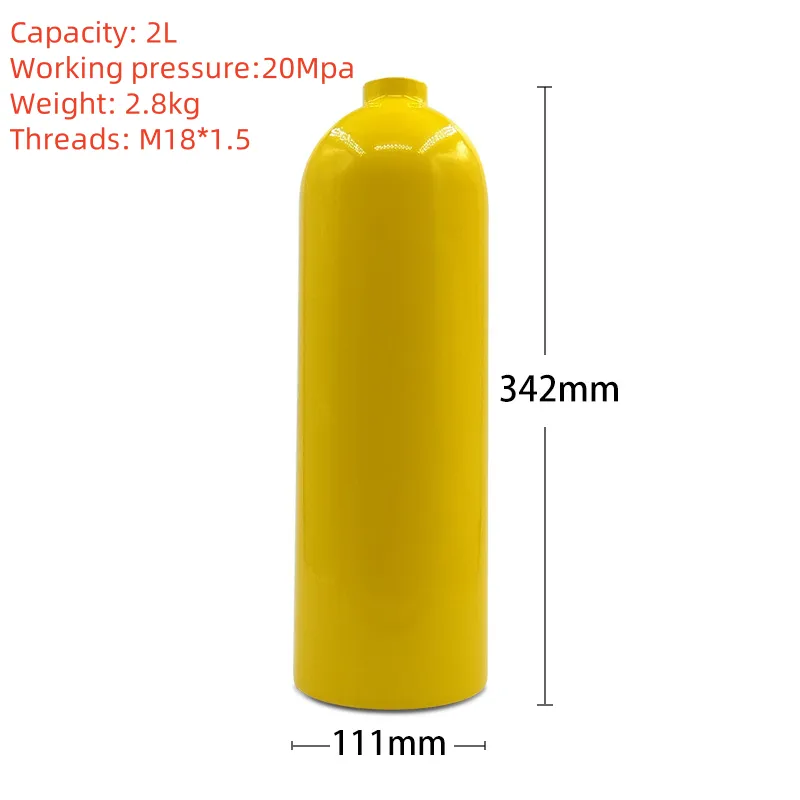
Our commitment to excellence is backed by rigorous internal audits and international certifications.
Customization Solutions for Your Scuba Diving Tank Needs
We understand that specific diving needs may require customized solutions. Beyond our standard Diving Oxygen Cylinder offerings, we provide various customization options for bulk orders or specialized applications:
- Capacity and Pressure Variants: While our standard range covers most needs, we can discuss custom capacities or specific working pressures to meet unique project requirements, whether for a compact personal scuba tank or a larger commercial unit.
- Valve Configuration: We offer a variety of valve options (K-valve, DIN valve, Left-hand valves) to ensure compatibility with your existing regulators and local standards. We can also integrate specialized valves for specific gas mixes.
- Exterior Finishes: Custom color coatings or specialized protective treatments can be applied to meet aesthetic preferences or enhance resistance to specific environmental conditions (e.g., extra UV protection for constant outdoor exposure).
- Branding and Marking: For dive centers, resorts, or retail chains, we offer custom branding and unique marking options, including custom logos and serial numbering conventions.
- Accessory Integration: We can provide cylinders bundled with specific accessories like protective boots, cylinder mesh, or integrated valve protection caps.
Application Cases & Customer Experiences
Our Diving Oxygen Cylinder has been deployed in a multitude of real-world scenarios, garnering positive feedback for its reliability and performance.
Case Study: Coral Reef Restoration Project
A leading marine conservation organization recently deployed our scuba tanks for sale (specifically, 15L aluminum cylinders) for their long-term coral reef restoration efforts in the South Pacific. The divers praised the cylinders' lightweight nature, which reduced fatigue during extended underwater work, and their exceptional corrosion resistance in the warm, saline environment. The consistent air delivery from the diving oxygen cylinder enabled precise and safe operations over many hours, contributing directly to the project's success.
Customer Feedback: Professional Dive Instructor
"As a professional dive instructor operating a busy dive center, reliability is non-negotiable. We've been using Whipway's scuba diving tank for over three years, and they've proven to be incredibly robust. Their durability, even with daily use by multiple students, is impressive. The consistent quality and the fact that they've never given us an issue under pressure make them our go-to choice for all our training and recreational dives. This makes finding a trustworthy scuba tank for sale much easier." - Captain John M., PADI Master Scuba Diver Trainer.
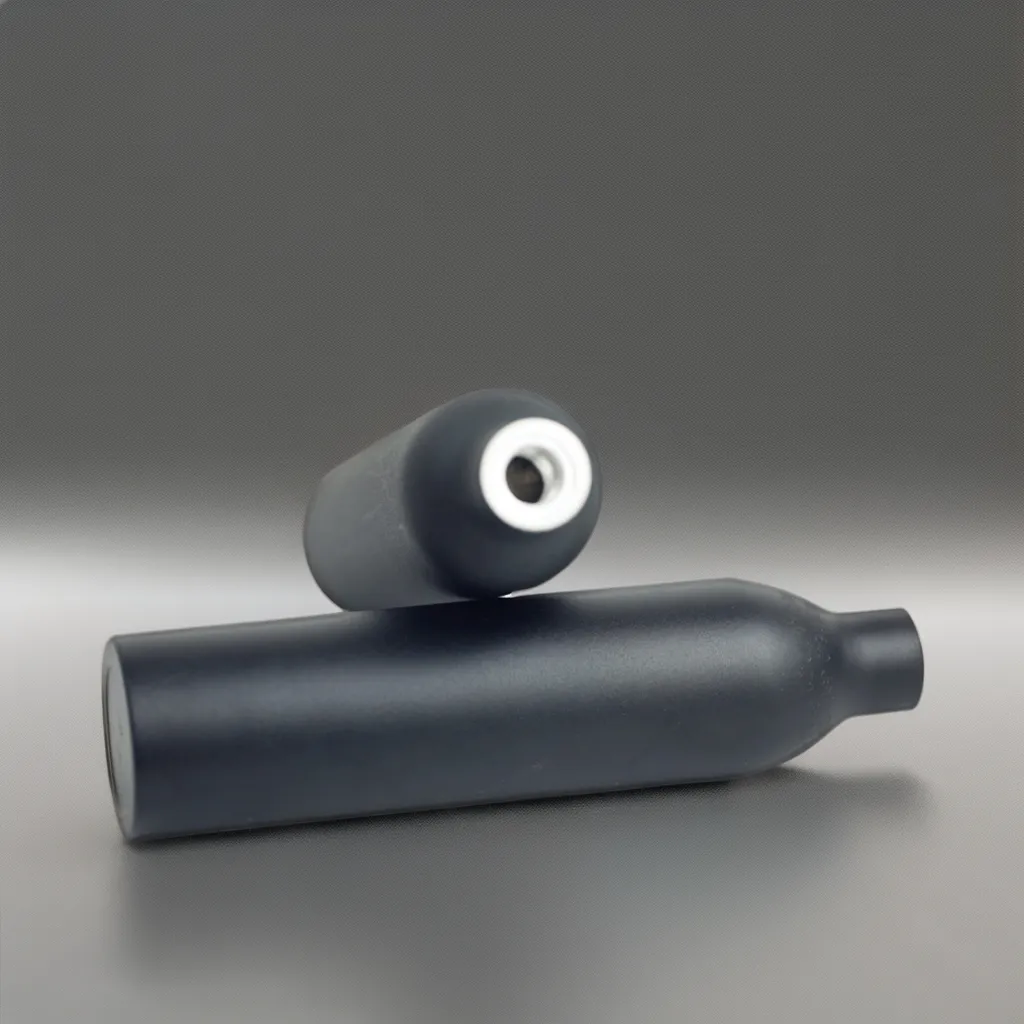
Our Diving Oxygen Cylinder performing reliably in diverse underwater environments.
Enhancing Trust: Warranty, Delivery, and Support
At Whipway, we believe that trust is built through transparency and unwavering support. When you purchase a scuba tank for sale from us, you gain access to a comprehensive support system:
- Industry-Leading Warranty: Our Diving Oxygen Cylinder comes with a 5-year limited warranty against manufacturing defects, underscoring our confidence in our product's quality and durability. This warranty covers structural integrity and material flaws under normal operating conditions.
- Streamlined Delivery: We understand the importance of timely delivery. Our efficient logistics network ensures that your order for a portable scuba tank or bulk cylinders is processed and dispatched promptly. Standard delivery times within North America and Europe are typically 7-14 business days, with expedited options available upon request. International shipping times vary but are always communicated clearly upfront.
- Dedicated Customer Support: Our team of highly trained professionals is available to assist you with any inquiries, from technical specifications and maintenance advice to order tracking and after-sales support. We offer multi-channel support including phone, email, and live chat during business hours. We are committed to ensuring your satisfaction with every scuba tank for sale purchase.
- Maintenance Guidelines & Resources: We provide detailed user manuals and online resources covering proper handling, storage, visual inspection protocols, and hydrostatic testing requirements, empowering you to maintain your cylinder's safety and extend its lifespan.
Frequently Asked Questions (FAQ) about Scuba Tanks for Sale
Q1: What is the primary material used in your Diving Oxygen Cylinders, and why?
A1: Our Diving Oxygen Cylinder is primarily made from high-strength 6061-T6 aluminum alloy. This material is chosen for its excellent balance of strength, lightweight properties, and superior corrosion resistance, particularly in saltwater environments, which significantly enhances the cylinder's lifespan and ease of handling.
Q2: What are the key inspection standards your scuba tanks adhere to?
A2: Our scuba tanks for sale adhere to stringent international standards, including ISO 7866 (for aluminum alloy seamless gas cylinders), U.S. DOT (Department of Transportation) specifications (e.g., DOT-3AL), and the European Pressure Equipment Directive (PED) for CE marking. Each cylinder undergoes hydrostatic testing and visual inspections to these standards.
Q3: What is the typical lifespan of a Diving Oxygen Cylinder, and how can it be maximized?
A3: With proper care and regular maintenance, our diving oxygen cylinder can last for 20-30 years or more. Maximizing its lifespan involves adhering to annual visual inspections, periodic hydrostatic testing (typically every 5 years in the US), proper storage (dry, cool place, upright), avoiding overfilling, and preventing physical damage or internal moisture.
Q4: Can your scuba tanks be used for Nitrox or Trimix?
A4: Yes, our scuba air tank models are compatible with enriched air nitrox (EANx) and trimix, provided they are oxygen-cleaned for mixes exceeding 40% oxygen, and equipped with an oxygen-compatible valve and O-rings. It's crucial to ensure proper training and adherence to gas-specific diving procedures.
Q5: What's the difference between K-valve and DIN valve, and which do your tanks use?
A5: A K-valve (or Yoke valve) uses a clamp system to attach the regulator. A DIN valve (Deutsche Industrie Norm) screws directly into the tank's neck, providing a more secure, high-pressure seal. Our scuba tanks for sale can be equipped with either type of valve, or a convertible valve, to ensure compatibility with your preferred regulator system.
Q6: What does "hydrostatic testing" entail for a scuba tank?
A6: Hydrostatic testing is a critical safety test where a scuba tank for sale is filled with water and pressurized to a specified test pressure (typically 5/3rds or 1.5 times its working pressure) for a certain duration. This measures the tank's elasticity and permanent expansion to ensure it can safely hold high pressures without structural degradation. It's a mandatory periodic test.
Q7: Are your scuba tanks suitable for cold water diving?
A7: Yes, our Diving Oxygen Cylinder is designed to perform reliably across a wide range of temperatures, including cold water environments. Their robust construction and material properties ensure consistent performance without compromising safety or gas delivery in colder conditions. However, proper regulator and valve insulation might be necessary to prevent freeze-ups in extremely cold water.
Conclusion: Your Trusted Partner for Scuba Tanks for Sale
Choosing the right scuba tank for sale is a decision that impacts not just your enjoyment of diving but, more importantly, your safety. Our Diving Oxygen Cylinder stands as a testament to engineering excellence, meticulous manufacturing, and unwavering commitment to safety. With a focus on durability, performance, and adherence to the highest international standards, we provide a product that empowers divers and professionals across various industries. From the initial material selection to the final rigorous testing, every step in our process is designed to deliver a superior scuba diving tank that you can trust under pressure. Explore our full range and learn more at https://www.whipway.com/oxygen-diving-cylinder.html and embark on your underwater adventures with confidence.
References and Further Reading:
-
Your Secret to Next-Level Steak: Happywhip N2O Culinary FoamNewsAug.01,2025
-
Beyond Whipped Cream: The Chef's Secret to Elevating Your Meat Dishes with N2ONewsJul.31,2025
-
Rapid Ice Cream Preparation with N₂O Cream ChargersNewsJul.25,2025
-
Whipped Cream Charger Threaded Valve Sealing Test, Cream ChargerNewsJul.14,2025
-
Whipped Cream Charger Tailored Threaded Nozzle DesignNewsJul.14,2025
-
Scuba Oxygen Cylinder Thermal Insulation CoatingNewsJul.14,2025
-
Gas Cylinder Manufacturers Stainless Steel Valve DesignNewsJul.14,2025
Related Products


